Have you ever seen a person wearing a garment whose fabric you would happily have in your stash? I must admit until recently I hadn’t, but since I have been gathering checked shirt fabrics for a future project I have found myself studying passing gentlemen, many of the most unprepossessing type, and wishing I could have the shirts off their backs, only for my stash you understand. It has become a running joke with my Dearest, as I find my eye captured and held by men of all ages, sizes and types each wearing loud checks of all colours and design. I have yet to follow one down the street with covetous intent, but you never know….
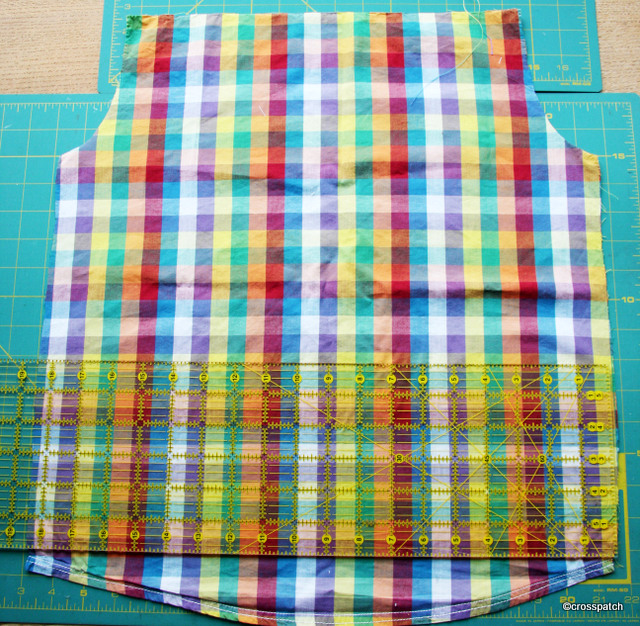
My passion for fabric outstrips my available fabric buying resources exponentially, so I am always on the lookout for ways of acquiring fabric for quilting with the least outlay of funds. Inspired by my love for recycling and by the plaid scrap quilts I have seen on Pinterest I began collecting checked shirts bought in charity shops. My local charity shop has been an almost weekly supplier of treasure, and each so far costing between £1 and £2.50.
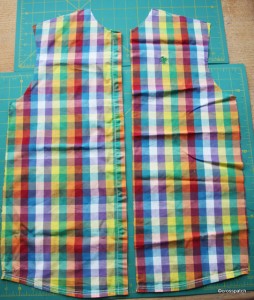
I find that a man’s “small” shirt will render the largest piece from the back measuring 21” by 25” measuring under the armholes and from yoke to tail, which is equal to a fat quarter, the front a similar amount of fabric in two halves, and then the sleeves although an odd shape will render at least as much as a fat quarter between them or less if short sleeves, but if I calculate each shirt to represent half a yard of fabric I don’t think I will be disappointed.
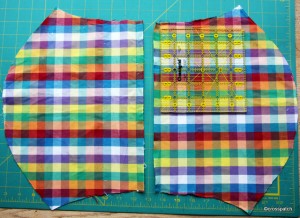
The smallest shirt I have bought for £1 (pictured) was age 11-12 and gave me a back measuring 18.5” by 22”, the biggest a 17.5” collar shirt from Boden which rendered a back measuring 31” by 30” but bizarrely was cut on the bias and looks like a table cloth, the sleeves were cut on the straight grain, so although large the shirt will similarly render only a half yard.
The inside of the Yoke is often cut on the bias which limits its use but two small squares could be cut from it for another scrap project, and the yoke will render squares or strings.
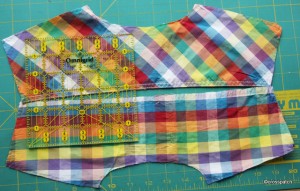
My rule in choosing which shirts to buy is that they must be 100% cotton, not seersucker, must be bright not muddy colours, and must be checked not striped. Mostly the shirts I buy are unworn or barely worn and that can be discerned by looking at the labels for wash fatigue and collar for signs of wear. So far I have made only two mistakes, poplin is too crackly, and does not iron well. To achieve a good mix of colour and pattern I will need perhaps 30 to 40 shirts, but that will give me 15-20 yards of fabric which should be enough for more than one quilt, one large and maybe a couple of lap quilts.
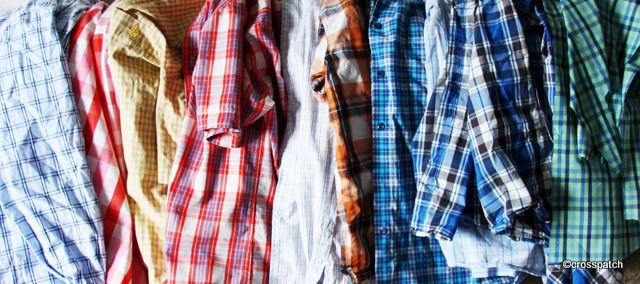
My observations on charity shop shirt buying so far are:-the louder the shirt the more likely that it will be unworn, perhaps it’s a case of loud shirts having a limited use, or that they generally fall into the unwanted gift, or “seemed like a good idea at the time” category, which languished at the back of the wardrobe for a couple of years and then got edited out to the charity shop. And…. children’s clothes, particularly summer wear in Britain, unless passed down from oldest to youngest, probably only has an 8 to 10 week window of wear, before its back to school uniform in September, so many summer shirts have hardly seen a washing machine more than half a dozen times before they are put away to have been outgrown by the following summer, so a future life in a quilt is a greener alternative to another 8 to 10 weeks life in a different boy’s wardrobe.
